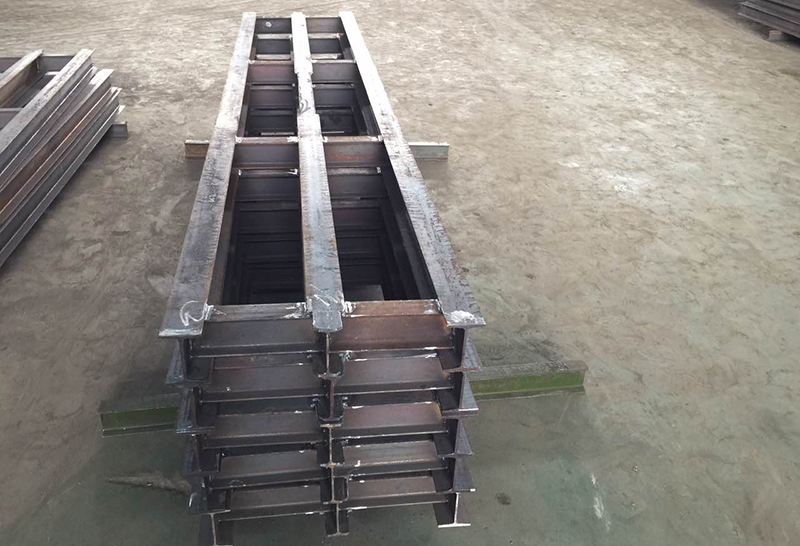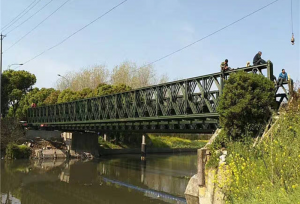Product introduction
The longitudinal beam is an important part of the Bailey Bridge. Bailey Bridge, invented by British engineer Donald West Bailey in 1938. This kind of bridge is made of high-strength steel and is made up of lightweight standardized truss unit components and beams, longitudinal beams, bridge decks, bridge seats and connectors, etc., and can be quickly assembled on site to be suitable for various spans and loads with special installation equipment. Truss girder bridge.
Product Classification
The longitudinal beams of Bailey Bridge are divided into two types: longitudinal beams with buckle and longitudinal beams without buckle.
(1) Buttons are welded on the buckle longitudinal beams, which are set on both sides of the bridge deck. The bridge deck tenon is placed between the buttons. Four of the buttons are provided with through holes for the edge material and bolts to pass through the holes. The bridge deck is connected with the buckle longitudinal beam.
(2) Longitudinal beams without buckle are arranged in the middle of the bridge deck regardless of the front and back sides. Nowadays, due to the large traffic load, the longitudinal beams and wood plank structures are no longer commonly used. Orthotropic steel bridge decks are used in more cases.


The Bailey steel bridge, steel box girder and plate girder produced by Zhenjiang Great Wall Heavy Industry are exported to dozens of countries and are well received by users. Currently in third world countries, stringers are still in wide demand.










